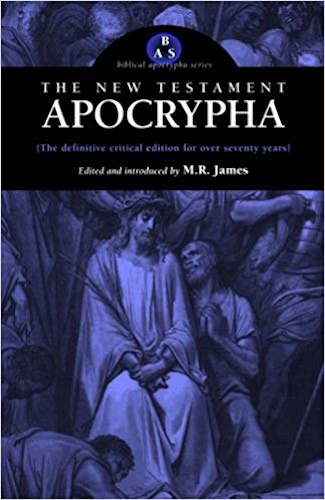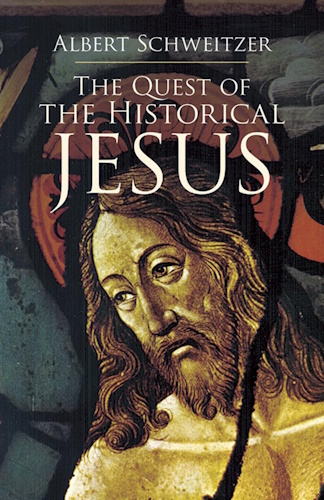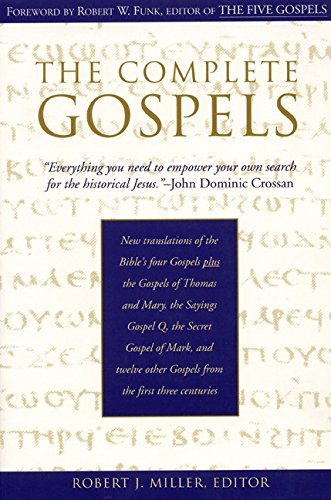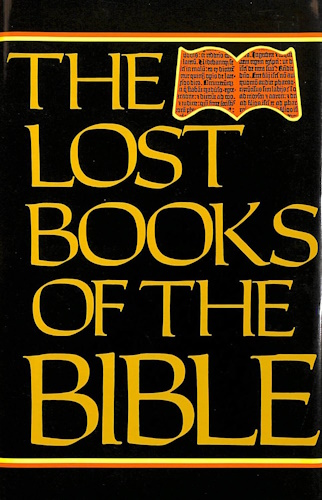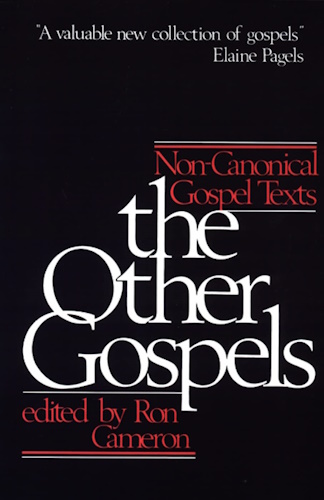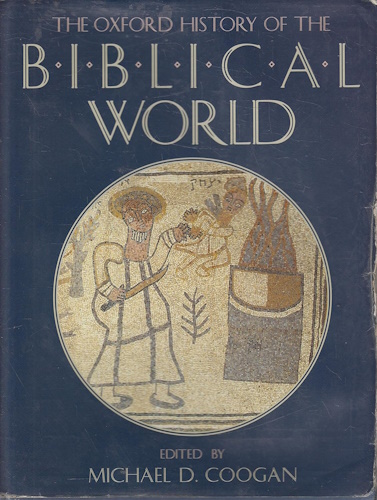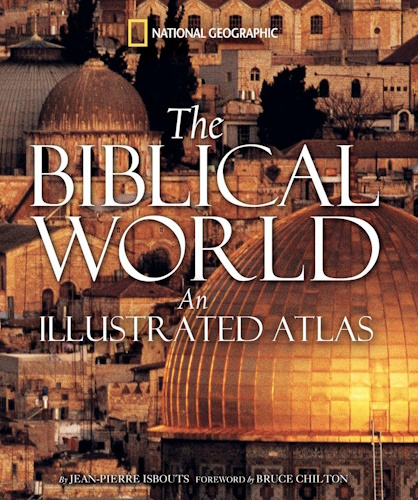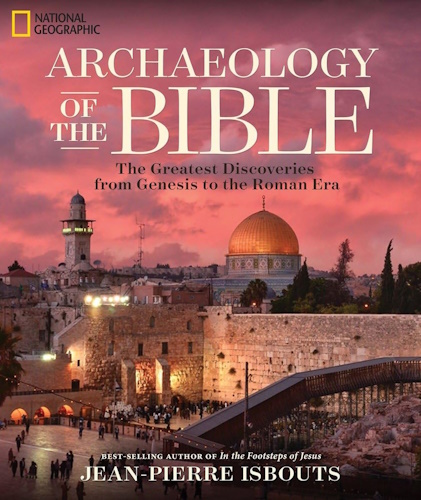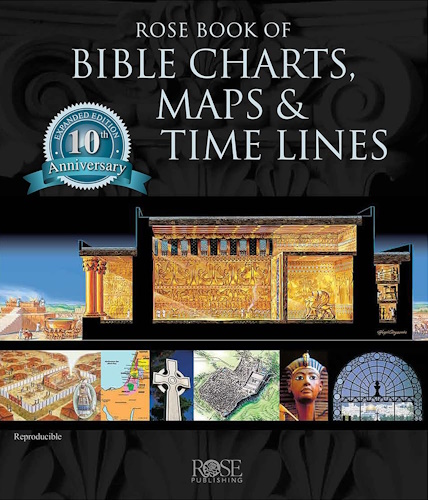
The Teaching of the Twelve Apostles, Commonly Called the Didache
INTRODUCTION
No document of the early church has proved so bewildering to scholars as this apparently innocent tract which was discovered by Philotheos Byrennios in 1873. The Didache or Teaching (for that is what the Greek word means) falls into two parts. The first is a code of Christian morals, presented as a choice between the way of life and the way of death. The second part is a manual of Church Order which, in a well-arranged manner, lays down some simple, at times even naïve, rules for the conduct of a rural congregation. It deals with such topics as baptism, fasting, the Lord's Supper, itinerant prophets, and the local ministry of bishops and deacons. It concludes with a warning paragraph on the approaching end of the world.
At one time this tract was viewed as a very ancient product—as early as A.D. 70 or 90. Recent study, however, has conclusively shown that, in the form we have it, it belongs to the second century. There is, nevertheless, no unanimity among scholars about its exact date or purpose. It has appropriately been called the "spoiled child of criticism"; and it will probably need a good deal more spoiling before its riddle is finally solved.
The “Two Ways”
The literary problem of the Didache is extremely complex and only the bare outlines can be sketched here. As it stands, the document bears a close relationship to several other early Christian writings. The moral catechism or "Two Ways" of its opening chapters (chs. 1 to 5) appears in a rather different version at the end of the Letter of Barnabas (between A.D. 100 and 130), and has also come down to us as an independent document in a Latin translation. Much of this material, furthermore, turns up in the fourth century Apostolic Church Order (with many interpolations) and in the Life of Schnudi (fifth century). The connection between all these documents has been very closely studied, and differing opinions are held about it. Some claim that the author of Barnabas invented the "Two Ways." Others contend that the "Two Ways" was originally an independent catechism (perhaps Jewish in origin), and that it has been incorporated in different forms by the various compilers. Perhaps the most reasonable explanation to account for the many complexities is as follows:
The "Two Ways" was an independent catechism current in several versions, of which three have come down to us. None represents the original in its pure form. Barnabas’ is the earliest version we possess, but it suffers from displacements, and here and there the author has freely rendered his source in his own style.460 The second form is that found (with minor variations) in the Latin, the Apostolic Church Order, and the Life of Schnudi. This has preserved the original order, but it displays an ecclesiastical tendency461 and has interpolated a further section (= Did. 3:1–6, commonly called "the fences"462). The final form is that in the Didache. It is distinguished by the addition of yet another insertion—sayings from the Gospels and other sources (chs. 1:3 to 2:1).
Date and Place of the Didache
The first five chapters of the Teaching, then, represent a late form of an original catechism into which the Didachist has inserted en bloc and not very neatly463 some distinctively Christian sayings. They betray a knowledge of Matthew and Luke, and one is clearly derived from the Shepherd of Hermas (ch. 1:5 = Man. 2:4.–6), which was written about A.D. 100. Another indication of the date of the Didache is to be found in ch. 16, where a citation from the Letter of Barnabas appears (ch. 16:2 = Barn. 4:9). There can be little doubt that we are dealing with a second century document which reveals a wide canon of Scripture, including Barnabas and Hermas. The terminus ad quem is to be set by the quotations from the Teaching in a Syrian church order called the Didascalia. This dates from the early third century.
That the Didache comes from Alexandria464 is suggested by several factors. The "Two Ways" was in circulation there, for the Letter of Barnabas and the Apostolic Church Order come from that locality. It is possible, but not certain, that Clement of Alexandria knew our Didache.465 The Teaching's liberal attitude toward the New Testament canon, apparently including Barnabas and Hermas, bespeaks Alexandria. Furthermore, up to the fourth century the Teaching was highly regarded in Egypt, itself hovering on the verge of the canon, and being mentioned by Athanasius as suitable for catechetical reading (Festal Letter, ch. 39). Then again, Serapion of Thmuis (fourth century) has a quotation from the Didache in his Eucharistic prayer. In view of the conservative nature of these prayers, this is a weighty factor.
The Church Order of the Didache
The second part of the Teaching (chs. 6 to 15) is a manual of Church Order. It has generally been held that the Didachist himself wrote this section of the work, adding it to the "Two Ways." It poses, however, very difficult problems, and three main views are current about it. Some claim that it faithfully reflects the subapostolic period in the rural churches of Syria. Others hold that its regulations regarding prophets betray its Montanist origin. A third opinion is that the Didache is an artificial composition, aimed to recall the second century Church to greater simplicity by reconstructing an imaginative picture of primitive Christianity from apostolic sources. This third view is most unlikely. Second century literature was never purely antiquarian in mode or interest. Its reconstructions of primitive times were directed toward giving apostolic warrant to newer ideas and customs. It is the absence from the Didache of such familiar themes as virginity, episcopacy, Gnostic and anti-Gnostic tendencies, which needs explaining.
The claim that the Didache is a Montanist tract has more to be said for it. Yet this view, too, is hardly tenable. The most characteristic Montanist features are lacking from the Teaching. It reflects nothing of Montanus and his prophetesses, of the ascetic rigor of that movement, of the high place accorded women, of the lively eschatology in connection with Pepuza, or of the opposition to second marriages and second repentance. On all these questions the Didache is silent. This disturbing fact has to be met by the further assumption that all clear traces of the New Prophecy were purposely suppressed in the interests of showing "how respectable and apostolic Montanism could be." This is, in short, an admission that the Teaching is not really Montanist. It is, then, to the first view that we are driven. While it is not without difficulties, it is less unlikely than the others. Some of these difficulties, moreover, can be removed if we do not follow the general assumption that the Didachist wrote this section of the tract himself. It is much more plausible to suppose that he was a compiler, rather than an author; and that, just as he made use of the "Two Ways" at the beginning, so in the second part of his work he utilized an early source for his Church Order. That would explain why his tract has such a curious appearance. Onto the catechism he has sewn some genuinely primitive regulations about Church life. The effect is very odd, for he implies that the moral catechism sufficed for baptismal instruction (ch. 7:1), which is, of course, contrary to all we know of early Christianity. Only a scribe with a limited number of sources at hand could have left such an impression. He did, indeed, try to rectify things a little by adding the gospel precepts. But that was the best he could do under the circumstances. It is not possible to tell how much of the Church Order he has faithfully preserved or how much he has altered. Yet his method of handling the "Two Ways" suggests that he would be more likely to make insertions en bloc than to change his source radically.
We should assume, then, that some scribe in Alexandria about A.D. 150 edited two ancient documents which came into his hands. One was the "Two Ways"; the other was a late first century set of regulations about Church life. He made some changes in them—how many we shall never know. He certainly added a section of sayings to the "Two Ways" and probably composed the final ch. 16, which is only loosely related to the rest of the document. It is noteworthy that an interest in perfection appears in these two places (chs. 1:4; 16:2) and in one other—at the junction of the two sources (ch. 6:2). It seems a mark of the Didachist. Moreover, it is only in his addition to the catechism and in ch. 16 that a wide knowledge of New Testament Scripture is evident. In these two places he conflates Matthew with Luke and cites, among other things, Barnabas and Hermas. The rest of the work reveals only a knowledge of Matthew's Gospel.
The Didache, thus, is the first of those fictitious Church Orders which edit ancient material and claim apostolic authorship. As in many such instances (e.g., the Apostolic Church Order, the Apostolic Constitutions, the Testament of Our Lord), we cannot be sure precisely what is original and what is edited. Nor do the various regulations necessarily apply to the time of the compilation. Sometimes a scribe will brush up ancient material sufficiently to make it appear relevant to his period. More often he will change it only a little, leaving a curious combination of the ancient and the modern, which is bewildering. Hence a degree of caution is needed in citing the Didache as a witness to first century customs. Yet the main outlines of its arrangements for Church life do seem to reflect the end of the first century before the monepiscopate had finally triumphed and while the gift of prophecy was still exercised (chs. 11; 13). Moreover, the Eucharistic prayers (chs. 9; 10), so clearly modeled on the Jewish forms for grace before and after meals, betray a period when the Lord's Supper was still a real supper, and when the joyful and expectant note of the Messianic Banquet had not yet been obscured by the more solemn emphasis on the Lord's Passion.
To compile such a document must have been a congenial task for an Alexandrine scribe who adhered to the small Catholic minority in that city. Surrounded as he was by every novelty of Gnostic speculation, he would doubtless take a special delight in preserving the records of antiquity.
That the source of the Didache's Church Order (chs. 6:3 to 15) belongs to Syria and comes from the late first century may be gathered from several factors. It is clearly dependent upon Matthew's Gospel and so cannot be earlier than A.D. 90. This Gospel, it may be noted, probably comes from Syria. The Eucharistic prayers reflect an area where wheat is sown on the hillsides (ch. 9:4), and the baptismal section presupposes a vicinity where warm baths are prevalent (ch. 7:2). All these points bespeak Syria, though the Eucharistic prayers themselves may be Judean in origin. The prophets and teachers (chs. 11 and 13) forcibly recall the situation in Antioch where, according to Acts 13:1, the Church leaders were so named. We may remind ourselves that the author of The Acts is always careful about his titles. The picture we gain from this source of the Didache is one of rural communities periodically enjoying a visitation from the leaders of some Christian center. Indeed, a city like Antioch may well have been responsible for this primitive manual to guide the rural churches.
Chapter 1. The Two Ways and the First Commandment.
There are two ways, one of life and one of death, but a great difference between the two ways. The way of life, then, is this: First, you shall love God who made you; second, love your neighbor as yourself, and do not do to another what you would not want done to you. And of these sayings the teaching is this: Bless those who curse you, and pray for your enemies, and fast for those who persecute you. For what reward is there for loving those who love you? Do not the Gentiles do the same? But love those who hate you, and you shall not have an enemy. Abstain from fleshly and worldly lusts. If someone strikes your right cheek, turn to him the other also, and you shall be perfect. If someone impresses you for one mile, go with him two. If someone takes your cloak, give him also your coat. If someone takes from you what is yours, ask it not back, for indeed you are not able. Give to every one who asks you, and ask it not back; for the Father wills that to all should be given of our own blessings (free gifts). Happy is he who gives according to the commandment, for he is guiltless. Woe to him who receives; for if one receives who has need, he is guiltless; but he who receives not having need shall pay the penalty, why he received and for what. And coming into confinement, he shall be examined concerning the things which he has done, and he shall not escape from there until he pays back the last penny. And also concerning this, it has been said, Let your alms sweat in your hands, until you know to whom you should give.
Chapter 2. The Second Commandment: Grave Sin Forbidden.
And the second commandment of the Teaching; You shall not commit murder, you shall not commit adultery, you shall not commit pederasty, you shall not commit fornication, you shall not steal, you shall not practice magic, you shall not practice witchcraft, you shall not murder a child by abortion nor kill that which is born. You shall not covet the things of your neighbor, you shall not swear, you shall not bear false witness, you shall not speak evil, you shall bear no grudge. You shall not be double-minded nor double-tongued, for to be double-tongued is a snare of death. Your speech shall not be false, nor empty, but fulfilled by deed. You shall not be covetous, nor rapacious, nor a hypocrite, nor evil disposed, nor haughty. You shall not take evil counsel against your neighbor. You shall not hate any man; but some you shall reprove, and concerning some you shall pray, and some you shall love more than your own life.
Chapter 3. Other Sins Forbidden.
My child, flee from every evil thing, and from every likeness of it. Be not prone to anger, for anger leads to murder. Be neither jealous, nor quarrelsome, nor of hot temper, for out of all these murders are engendered. My child, be not a lustful one. for lust leads to fornication. Be neither a filthy talker, nor of lofty eye, for out of all these adulteries are engendered. My child, be not an observer of omens, since it leads to idolatry. Be neither an enchanter, nor an astrologer, nor a purifier, nor be willing to took at these things, for out of all these idolatry is engendered. My child, be not a liar, since a lie leads to theft. Be neither money-loving, nor vainglorious, for out of all these thefts are engendered. My child, be not a murmurer, since it leads the way to blasphemy. Be neither self-willed nor evil-minded, for out of all these blasphemies are engendered.
Rather, be meek, since the meek shall inherit the earth. Be long-suffering and pitiful and guileless and gentle and good and always trembling at the words which you have heard. You shall not exalt yourself, nor give over-confidence to your soul. Your soul shall not be joined with lofty ones, but with just and lowly ones shall it have its intercourse. Accept whatever happens to you as good, knowing that apart from God nothing comes to pass.
Chapter 4. Various Precepts.
My child, remember night and day him who speaks the word of God to you, and honor him as you do the Lord. For wherever the lordly rule is uttered, there is the Lord. And seek out day by day the faces of the saints, in order that you may rest upon their words. Do not long for division, but rather bring those who contend to peace. Judge righteously, and do not respect persons in reproving for transgressions. You shall not be undecided whether or not it shall be. Be not a stretcher forth of the hands to receive and a drawer of them back to give. If you have anything, through your hands you shall give ransom for your sins. Do not hesitate to give, nor complain when you give; for you shall know who is the good repayer of the hire. Do not turn away from him who is in want; rather, share all things with your brother, and do not say that they are your own. For if you are partakers in that which is immortal, how much more in things which are mortal? Do not remove your hand from your son or daughter; rather, teach them the fear of God from their youth. Do not enjoin anything in your bitterness upon your bondman or maidservant, who hope in the same God, lest ever they shall fear not God who is over both; for he comes not to call according to the outward appearance, but to them whom the Spirit has prepared. And you bondmen shall be subject to your masters as to a type of God, in modesty and fear. You shall hate all hypocrisy and everything which is not pleasing to the Lord. Do not in any way forsake the commandments of the Lord; but keep what you have received, neither adding thereto nor taking away therefrom. In the church you shall acknowledge your transgressions, and you shall not come near for your prayer with an evil conscience. This is the way of life.
Chapter 5. The Way of Death.
And the way of death is this: First of all it is evil and accursed: murders, adultery, lust, fornication, thefts, idolatries, magic arts, witchcrafts, rape, false witness, hypocrisy, double-heartedness, deceit, haughtiness, depravity, self-will, greediness, filthy talking, jealousy, over-confidence, loftiness, boastfulness; persecutors of the good, hating truth, loving a lie, not knowing a reward for righteousness, not cleaving to good nor to righteous judgment, watching not for that which is good, but for that which is evil; from whom meekness and endurance are far, loving vanities, pursuing revenge, not pitying a poor man, not laboring for the afflicted, not knowing Him Who made them, murderers of children, destroyers of the handiwork of God, turning away from him who is in want, afflicting him who is distressed, advocates of the rich, lawless judges of the poor, utter sinners. Be delivered, children, from all these.
Chapter 6. Against False Teachers, and Food Offered to Idols.
See that no one causes you to err from this way of the Teaching, since apart from God it teaches you. For if you are able to bear the entire yoke of the Lord, you will be perfect; but if you are not able to do this, do what you are able. And concerning food, bear what you are able; but against that which is sacrificed to idols be exceedingly careful; for it is the service of dead gods.
Chapter 7. Concerning Baptism.
And concerning baptism, baptize this way: Having first said all these things, baptize into the name of the Father, and of the Son, and of the Holy Spirit, in living water. But if you have no living water, baptize into other water; and if you cannot do so in cold water, do so in warm. But if you have neither, pour out water three times upon the head into the name of Father and Son and Holy Spirit. But before the baptism let the baptizer fast, and the baptized, and whoever else can; but you shall order the baptized to fast one or two days before.
Chapter 8. Fasting and Prayer (the Lord's Prayer).
But let not your fasts be with the hypocrites, for they fast on the second and fifth day of the week. Rather, fast on the fourth day and the Preparation (Friday). Do not pray like the hypocrites, but rather as the Lord commanded in His Gospel, like this:
Our Father who art in heaven, hallowed be Thy name. Thy kingdom come. Thy will be done on earth, as it is in heaven. Give us today our daily (needful) bread, and forgive us our debt as we also forgive our debtors. And bring us not into temptation, but deliver us from the evil one (or, evil); for Thine is the power and the glory for ever.
Pray this three times each day.
Chapter 9. The Eucharist.
Now concerning the Eucharist, give thanks this way. First, concerning the cup:
We thank thee, our Father, for the holy vine of David Thy servant, which You madest known to us through Jesus Thy Servant; to Thee be the glory for ever.
And concerning the broken bread:
We thank Thee, our Father, for the life and knowledge which You madest known to us through Jesus Thy Servant; to Thee be the glory for ever. Even as this broken bread was scattered over the hills, and was gathered together and became one, so let Thy Church be gathered together from the ends of the earth into Thy kingdom; for Thine is the glory and the power through Jesus Christ for ever.
But let no one eat or drink of your Eucharist, unless they have been baptized into the name of the Lord; for concerning this also the Lord has said, "Give not that which is holy to the dogs."
Chapter 10. Prayer after Communion.
But after you are filled, give thanks this way:
We thank Thee, holy Father, for Thy holy name which You didst cause to tabernacle in our hearts, and for the knowledge and faith and immortality, which You modest known to us through Jesus Thy Servant; to Thee be the glory for ever. Thou, Master almighty, didst create all things for Thy name's sake; Thou gavest food and drink to men for enjoyment, that they might give thanks to Thee; but to us You didst freely give spiritual food and drink and life eternal through Thy Servant. Before all things we thank Thee that You are mighty; to Thee be the glory for ever. Remember, Lord, Thy Church, to deliver it from all evil and to make it perfect in Thy love, and gather it from the four winds, sanctified for Thy kingdom which Thou have prepared for it; for Thine is the power and the glory for ever. Let grace come, and let this world pass away. Hosanna to the God of David! If any one is holy, let him come; if any one is not so, let him repent. Maranatha. Amen.
But permit the prophets to make thanksgiving as much as they desire.
Chapter 11. Concerning Teachers, Apostles, and Prophets.
Whosoever, therefore, comes and teaches you all these things that have been said before, receive him. But if the teacher himself turns and teaches another doctrine to the destruction of this, hear him not. But if he teaches so as to increase righteousness and the knowledge of the Lord, receive him as the Lord. But concerning the apostles and prophets, act according to the decree of the Gospel. Let every apostle who comes to you be received as the Lord. But he shall not remain more than one day; or two days, if there's a need. But if he remains three days, he is a false prophet. And when the apostle goes away, let him take nothing but bread until he lodges. If he asks for money, he is a false prophet. And every prophet who speaks in the Spirit you shall neither try nor judge; for every sin shall be forgiven, but this sin shall not be forgiven. But not every one who speaks in the Spirit is a prophet; but only if he holds the ways of the Lord. Therefore from their ways shall the false prophet and the prophet be known. And every prophet who orders a meal in the Spirit does not eat it, unless he is indeed a false prophet. And every prophet who teaches the truth, but does not do what he teaches, is a false prophet. And every prophet, proved true, working unto the mystery of the Church in the world, yet not teaching others to do what he himself does, shall not be judged among you, for with God he has his judgment; for so did also the ancient prophets. But whoever says in the Spirit, Give me money, or something else, you shall not listen to him. But if he tells you to give for others' sake who are in need, let no one judge him.
Chapter 12. Reception of Christians.
But receive everyone who comes in the name of the Lord, and prove and know him afterward; for you shall have understanding right and left. If he who comes is a wayfarer, assist him as far as you are able; but he shall not remain with you more than two or three days, if need be. But if he wants to stay with you, and is an artisan, let him work and eat. But if he has no trade, according to your understanding, see to it that, as a Christian, he shall not live with you idle. But if he wills not to do, he is a Christ-monger. Watch that you keep away from such.
Chapter 13. Support of Prophets.
But every true prophet who wants to live among you is worthy of his support. So also a true teacher is himself worthy, as the workman, of his support. Every first-fruit, therefore, of the products of wine-press and threshing-floor, of oxen and of sheep, you shall take and give to the prophets, for they are your high priests. But if you have no prophet, give it to the poor. If you make a batch of dough, take the first-fruit and give according to the commandment. So also when you open a jar of wine or of oil, take the first-fruit and give it to the prophets; and of money (silver) and clothing and every possession, take the first-fruit, as it may seem good to you, and give according to the commandment.
Chapter 14. Christian Assembly on the Lord's Day.
But every Lord's day gather yourselves together, and break bread, and give thanksgiving after having confessed your transgressions, that your sacrifice may be pure. But let no one who is at odds with his fellow come together with you, until they be reconciled, that your sacrifice may not be profaned. For this is that which was spoken by the Lord: "In every place and time offer to me a pure sacrifice; for I am a great King, says the Lord, and my name is wonderful among the nations."
Chapter 15. Bishops and Deacons; Christian Reproof.
Appoint, therefore, for yourselves, bishops and deacons worthy of the Lord, men meek, and not lovers of money, and truthful and proved; for they also render to you the service of prophets and teachers. Therefore do not despise them, for they are your honored ones, together with the prophets and teachers. And reprove one another, not in anger, but in peace, as you have it in the Gospel. But to anyone that acts amiss against another, let no one speak, nor let him hear anything from you until he repents. But your prayers and alms and all your deeds so do, as you have it in the Gospel of our Lord.
Chapter 16. Watchfulness; the Coming of the Lord.
Watch for your life's sake. Let not your lamps be quenched, nor your loins unloosed; but be ready, for you know not the hour in which our Lord will come. But come together often, seeking the things which are befitting to your souls: for the whole time of your faith will not profit you, if you are not made perfect in the last time. For in the last days false prophets and corrupters shall be multiplied, and the sheep shall be turned into wolves, and love shall be turned into hate; for when lawlessness increases, they shall hate and persecute and betray one another, and then shall appear the world-deceiver as Son of God, and shall do signs and wonders, and the earth shall be delivered into his hands, and he shall do iniquitous things which have never yet come to pass since the beginning. Then shall the creation of men come into the fire of trial, and many shall be made to stumble and shall perish; but those who endure in their faith shall be saved from under the curse itself. And then shall appear the signs of the truth: first, the sign of an outspreading in heaven, then the sign of the sound of the trumpet. And third, the resurrection of the dead -- yet not of all, but as it is said: "The Lord shall come and all His saints with Him." Then shall the world see the Lord coming upon the clouds of heaven.
![]()
![]()
-
Urantia Book, 44:0.11 - The Celestial Artisans
Never in your long ascendancy will you lose the power to recognize your associates of former existences. Always, as you ascend inward in the scale of life, will you retain the ability to recognize and fraternize with the fellow beings of your previous and lower levels of experience. Each new translation or resurrection will add one more group of spirit beings to your vision range without in the least depriving you of the ability to recognize your friends and fellows of former estates.
-
Princess Bride 1987 Wallace Shawn (Vizzini) and Mandy Patinkin (Inigo Montoya)
Vizzini: HE DIDN'T FALL? INCONCEIVABLE.
Inigo Montoya: You keep using that word. I do not think it means what you think it means. -
Urantia Book, 117:4.14 - The Finite God
And here is mystery: The more closely man approaches God through love, the greater the reality -- actuality -- of that man. The more man withdraws from God, the more nearly he approaches nonreality -- cessation of existence. When man consecrates his will to the doing of the Father's will, when man gives God all that he has, then does God make that man more than he is.
-
Urantia Book, 167:7.4 - The Talk About Angels
"And do you not remember that I said to you once before that, if you had your spiritual eyes anointed, you would then see the heavens opened and behold the angels of God ascending and descending? It is by the ministry of the angels that one world may be kept in touch with other worlds, for have I not repeatedly told you that I have other sheep not of this fold?"
-
Urantia Book, Foreword - 0:12.12 - The Trinities
But we know that there dwells within the human mind a fragment of God, and that there sojourns with the human soul the Spirit of Truth; and we further know that these spirit forces conspire to enable material man to grasp the reality of spiritual values and to comprehend the philosophy of universe meanings. But even more certainly we know that these spirits of the Divine Presence are able to assist man in the spiritual appropriation of all truth contributory to the enhancement of the ever-progressing reality of personal religious experience—God-consciousness.
-
Urantia Book, 1:4.3 - The Mystery Of God
When you are through down here, when your course has been run in temporary form on earth, when your trial trip in the flesh is finished, when the dust that composes the mortal tabernacle "returns to the earth whence it came"; then, it is revealed, the indwelling "Spirit shall return to God who gave it." There sojourns within each moral being of this planet a fragment of God, a part and parcel of divinity. It is not yet yours by right of possession, but it is designedly intended to be one with you if you survive the mortal existence.
-
Urantia Book, 1:4.1 - The Mystery Of God
And the greatest of all the unfathomable mysteries of God is the phenomenon of the divine indwelling of mortal minds. The manner in which the Universal Father sojourns with the creatures of time is the most profound of all universe mysteries; the divine presence in the mind of man is the mystery of mysteries.
-
Urantia Book, 1:4.6 - The Mystery Of God
To every spirit being and to every mortal creature in every sphere and on every world of the universe of universes, the Universal Father reveals all of his gracious and divine self that can be discerned or comprehended by such spirit beings and by such mortal creatures. God is no respecter of persons, either spiritual or material. The divine presence which any child of the universe enjoys at any given moment is limited only by the capacity of such a creature to receive and to discern the spirit actualities of the supermaterial world.
-
Urantia Book, 11:0.1 - The Eternal Isle Of Paradise
Paradise is the eternal center of the universe of universes and the abiding place of the Universal Father, the Eternal Son, the Infinite Spirit, and their divine co-ordinates and associates. This central Isle is the most gigantic organized body of cosmic reality in all the master universe. Paradise is a material sphere as well as a spiritual abode. All of the intelligent creation of the Universal Father is domiciled on material abodes; hence must the absolute controlling center also be material, literal. And again it should be reiterated that spirit things and spiritual beings are real.
-
Urantia Book, 50:6.4 - Planetary Culture
Culture presupposes quality of mind; culture cannot be enhanced unless mind is elevated. Superior intellect will seek a noble culture and find some way to attain such a goal. Inferior minds will spurn the highest culture even when presented to them ready-made.
-
Urantia Book, 54:1.6 - True And False Liberty
True liberty is the associate of genuine self-respect; false liberty is the consort of self-admiration. True liberty is the fruit of self-control; false liberty, the assumption of self-assertion. Self-control leads to altruistic service; self-admiration tends towards the exploitation of others for the selfish aggrandizement of such a mistaken individual as is willing to sacrifice righteous attainment for the sake of possessing unjust power over his fellow beings.
-
Urantia Book, 54:1.9 - True And False Liberty
How dare the self-willed creature encroach upon the rights of his fellows in the name of personal liberty when the Supreme Rulers of the universe stand back in merciful respect for these prerogatives of will and potentials of personality! No being, in the exercise of his supposed personal liberty, has a right to deprive any other being of those privileges of existence conferred by the Creators and duly respected by all their loyal associates, subordinates, and subjects.
-
Urantia Book, 54:1.8 - True And False Liberty
There is no error greater than that species of self-deception which leads intelligent beings to crave the exercise of power over other beings for the purpose of depriving these persons of their natural liberties. The golden rule of human fairness cries out against all such fraud, unfairness, selfishness, and unrighteousness.
